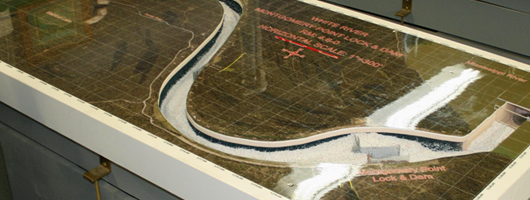
Physical Effects
Dating to the construction of the first navigation structures in the 1800's, a continuing effort has been made to fully understand their physical effects on both the riverbed and water surface. As part of the navigation project the Corps of Engineers has continuously monitored the river's response to navigation structures, and has found no effect on water surface elevations at higher flows. Recently, however, external interest groups have expressed concerns that the construction of navigation structures has significantly increased water surface elevations at higher flows.
In an effort to update on-going evaluations of the physical effects of the navigation structures, the Corps of Engineers, St. Louis District entered into contracts with external technical experts in the fields of river data collection, river engineering, hydraulics, and statistics. These experts studied the physical effects of navigation structures on water surfaces on the Middle Mississippi River (MMR). The Middle Mississippi River is described as the section of the Mississippi River between the confluence of the Missouri and Ohio Rivers. The results of these expert external reviews all lead to the conclusion that the navigation structures have not resulted in increased water surface elevations. The following paragraphs detail the efforts and conclusions of each expert. The St. Louis District will continue to monitor the physical effects of all construction in the river.
